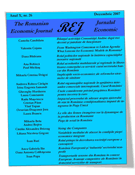Abstract:
The recent punishment of the biggest global microprocessor producer, Intel Corporation, for the alleged break of the European legislation in the competition field is a result easy to have been anticipated starting with 2004, when European Commission fined the biggest global producer of operation systems, Microsoft Corporation. Practically, from that moment on, a true Sword of Damocles hanged above the head of the giant of Santa Clara taking into account the numerous common elements of the – not to say the same – business strategies of the two companies. Such an identity as well as the reciprocal dependence has been the reasons why the analysts have permanently spoke since the late 80s of Wintel, the strategic alliance that transformed the PC architecture from a proprietary platform of IBM in a “co-proprietary” platform of Microsoft – Intel. And, in order for the semblance to be complete, as Microsoft was the first company in the history of the European – and global – competition law that didn’t immediately adjust its competitive behavior after the legal verdict, we can easily anticipate that the second company to get this title will be Intel. And the two cases can prove not only a Mens Rea of the executives of the companies but also a wrong approach of the European, as well as international, authorities in what regards positions of monopoly. It may be the moment that the competition policy be reformulated in a radical way in order to let the performance oriented companies, even if they are dominant, to explore business models and commercial practices that consumers can benefit from.
